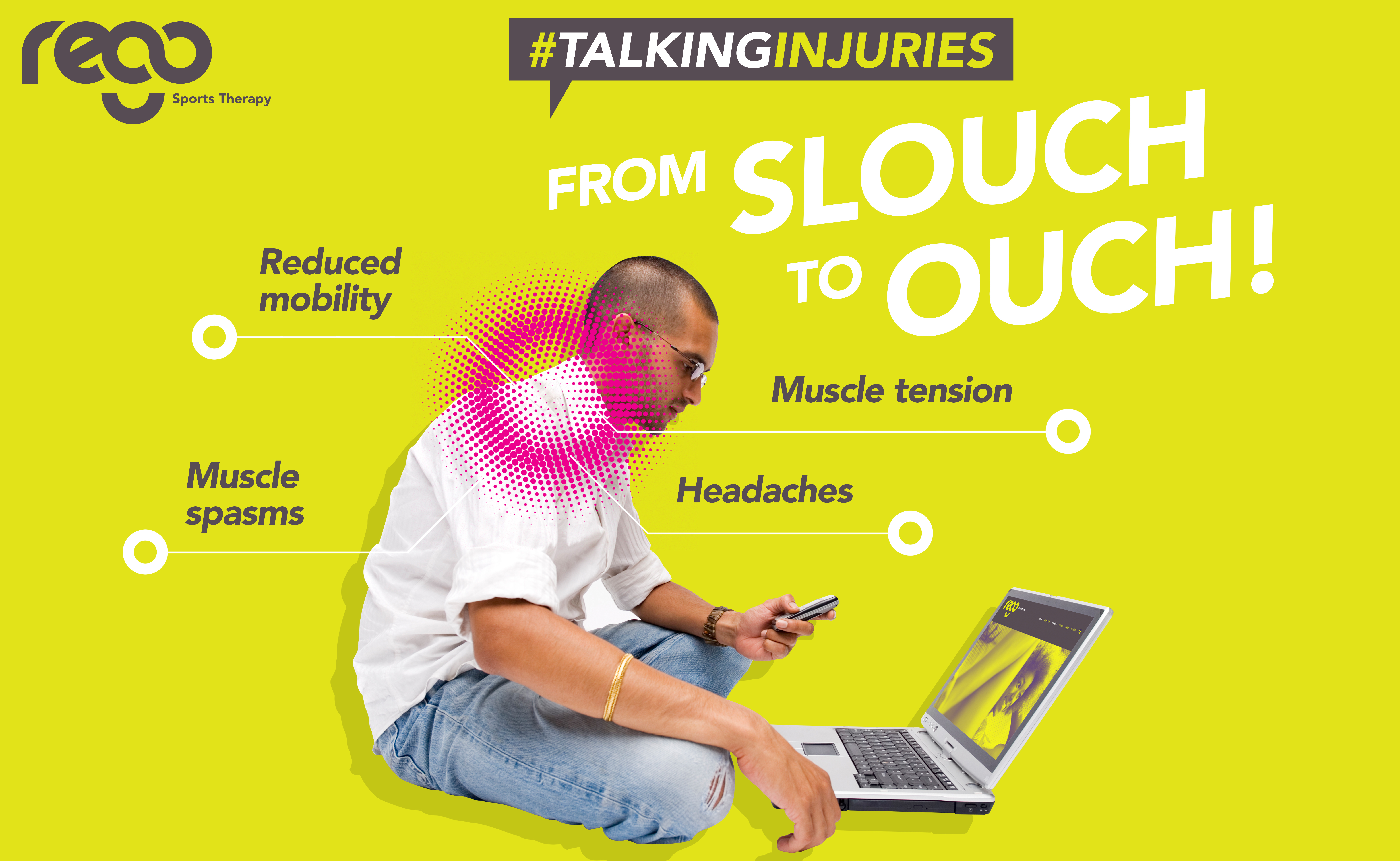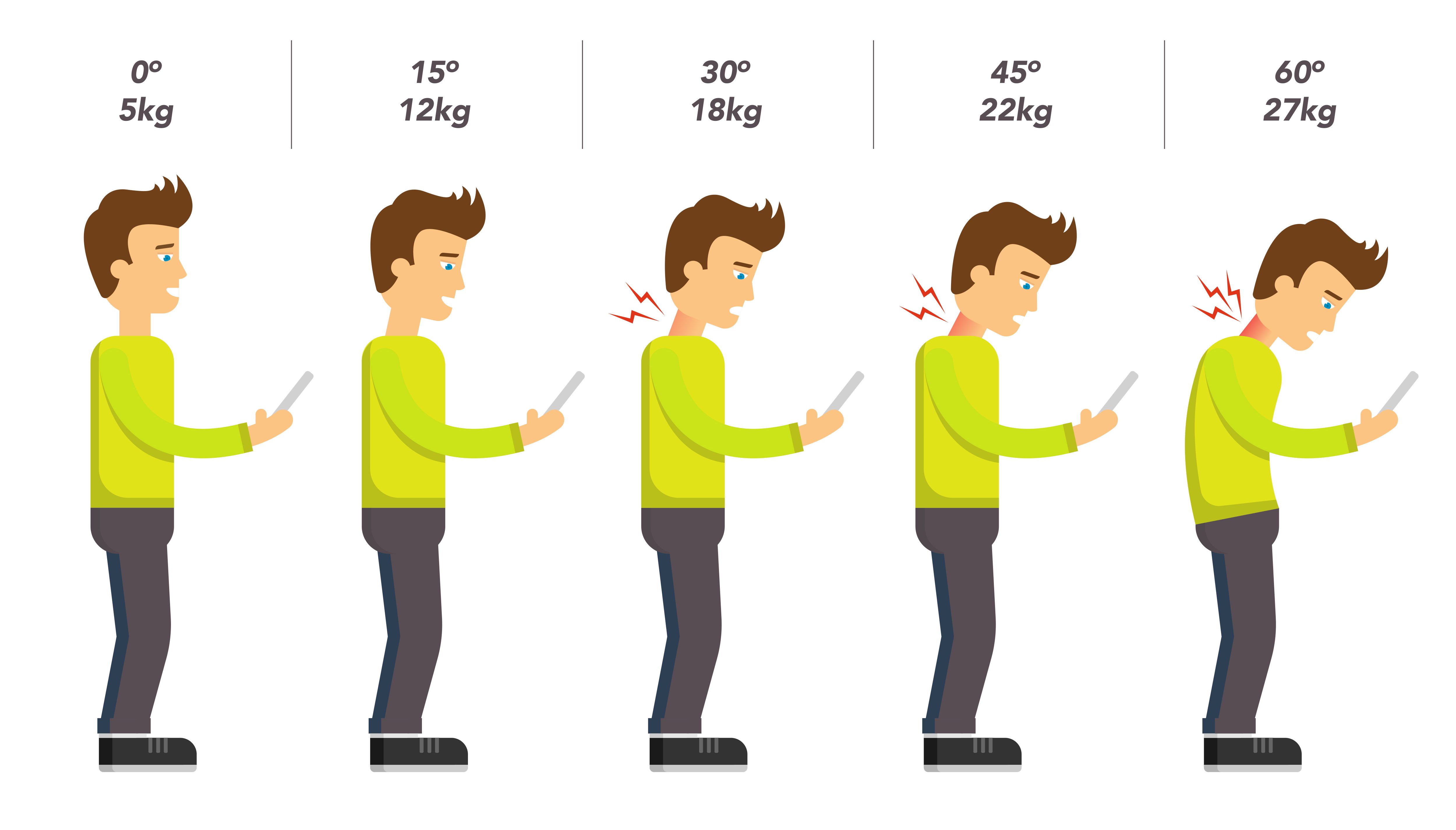Are you sitting comfortably?

I did a bit of digging recently which led me to uncover that in 2018/2019 498,000 workers in the UK suffered from musculoskeletal disorders*.
- 40% (200,000) were specific to the back
- 41% (203,000) were specific to the neck and upper limbs.
*Source: Labour Force Survey
Not all of the above stats would have been postural related musculoskeletal disorders, but with roughly 70% of my clients, whether sports associated or not, requesting upper back, neck, and shoulder treatments I decided to write a short blog on the subject. And, in particular, the importance of good posture, i.e. the way we stand and sit, causes of bad posture, and some self-help exercises to help relieve symptoms of postural related discomfort.
5 benefits of good posture:
- Good posture decreases the load on the muscles, soft tissues and joints This, in turn, will lead to less pain and injury
- Gives you better balance, lowering the risk of falls and improves athleticism
- It helps you feel less tired. When your muscles work in harmony they are more efficient at completing a task
- Less potential for headaches with reduced tension on the neck area
- Gives you better circulation throughout the body, and your organs, lungs and digestive system will work more effectively
Musculoskeletal imbalances caused by poor posture aren’t injuries as such, but more of dysfunction to the soft tissues. That’s because the soft tissue has become abnormal over time, likely caused by repetitive actions and habitual behaviour but without the impact of an injury. If left untreated the soft tissue dysfunction can impair the quality of life of the person affected.
Not an exhaustive list of causes but here are a few:
Computer work. I’m sure it’s no surprise that sitting at a desk all day is one of the main causes. And, in this period of lockdown where people are often using laptops in home-office setups, our posture often goes to pot! Slouching and hunching create tension in the muscles in the back and neck. As we slouch our head creeps forward placing more load on the neck muscles. The repetitive nature of doing this can cause tension, tightness, and imbalances in the soft tissue. This leads to pain.
Smartphone usage. Yep, the ‘smartphone slump’ puts all kinds of pressure on the neck. A study in the USA revealed that the correct head position when using a smartphone puts around 5 kg of pressure on the neck, whereas a 60 degree forward head tilt can put 27 kg of weight into the neck. That’s the weight of a mid-sized dog! The effects of this position cause some of our muscles to shorten, leading to muscle weakness and tension in the neck and upper back.

Driving. The seats in our cars generally don’t adequately accommodate the curve of the lower back, putting additional strain on the spine. Some smaller cars may lack legroom and headspace, forcing drivers into all manner of twisted positions to safely drive the vehicle. Lower, reclined seating positions pull on the hamstrings and cause the pelvis to roll backward. The neck, too, suffers when seats are reclined.
Carrying bags. Shoulder bags will pull you down on one side, which puts a strain on the muscles of one side of the body to keep upright. This uneven distribution of weight will progressively add more strain and tension leading to pain. Remember to switch shoulders.
Choice of footwear. You may not always link back pain with footwear but as I briefly mentioned in my previous blog about Runner’s Knee, in the human body ‘everything is connected’. High heels, poor-fitting shoes, and flimsy materials can all affect the support we need which can lead to back pain.
Musculoskeletal imbalances in the back, neck, and shoulders can promote some of the following symptoms:
- Muscle tightness in the back and neck
- Muscle tension
- Muscle spasms
- Reduced mobility
- Pain down the arms
- Headaches
- Fatigue
If you’re experiencing signs and symptoms of musculoskeletal pain then first get it checked by a doctor or specialist. This is to make sure the diagnosis is accurate and any other underlying conditions are eliminated before planning the right treatment.
Ways you can help yourself
1. Always be mindful of your posture
As you feel yourself easing into a slump prompt yourself to sit up or stand tall. Take regular breaks so your muscles don’t get stiff or tense from being in one position for too long.
2. Practice standing against a wall
If you’re in your own home you can practice resetting your posture by standing straight with your shoulders and heels back against a wall, your head level, and chin tucked in. The correct posture will align your ears to the middle of your shoulders. Hold this pose for 15-30 seconds before relaxing.
3. Take some time to stretch
Below are a few stretches you can easily do at home or at your desk, just pick a few. But before you dive in, take a moment to relax and be aware of your breathing. Relaxing your breathing pattern will maximise the effectiveness of each stretch.
Head & Neck
With 26 muscles in the neck, the following exercises will help stretch them.
Lateral neck flexion
- With your head in the upright and central, gently move your right ear sideways towards your right shoulder
- Hold for 10-15 seconds and repeat in the opposite direction
- You should feel the muscles of your neck gradually stretching as they lengthen

360-degree neck rotation
- Starting with your head upright and central, gently move your right ear sideways towards your right shoulder
- Very gently move your head forwards in a circular motion from the right side to the left. Then gently rotate your head backward from left to right to complete a 360-degree rotation. Repeat in the opposite direction
- You should feel the muscles of your neck gradually stretching as you move through various ranges

Head/Neck flexion and extension
- With your head upright, gently tilt your head forwards to about 45 degrees and hold for 10-15 seconds
- Repeat in the opposite direction with your head tilting backward
- You will be stretching the neck and upper back muscles, and front neck muscles

Head/Neck Rotation
- With your head upright, gently turn to the right side and hold for 10-15 seconds
- Repeat moving to the left side
- Feel the stretch at the furthest point you can achieve

The back and shoulders
Cat and Cow Stretch
- Cat & Cow increases the flexibility of the neck, shoulders, and spine. The movements of the torso also give a stretch to the hips, back, abdomen, chest, and lungs. Hold the Cat Stretch at its most upper point to feel a release of tension in the upper back and neck.

Cow Stretch

Back and shoulder extension
- Whilst being seated with your head in a neutral position, sit with a straight back and your feet flat to the floor
- Raise your arms above your head and interlock your fingers, and then gently extend your shoulders
- You will be stretching the upper back muscles

Back and shoulder extension
- Push your chair to the side and stand a few feet away from your desk
- Without overlocking the knees, gently bend yourself at the hips with your head horizontal and eyes to the floor. Extend your arms so your palms are placed on the desk. Without moving your feet, slowly push your palms forward to create a stretch in your back

Neck and shoulder stretch
- Whilst standing, place your right arm straight across your body and interlock it in the elbow joint of the left arm
- Turn your head towards the right side and tighten the lock of your arm to feel a stretch in the right side upper back and shoulder
- Repeat on the left side

Other ways to treat:
Although every case is different and must be assessed accordingly before treating, there are other methods to help prevent and treat musculoskeletal imbalances.
Soft tissue massage: Manipulates the muscles, ligaments, tendons, and helps realign the fibres. Stretching the soft tissue will improve flexibility, restore mobility, and maintain healthy muscles. Massage helps to increase blood flow and circulation which in turn increases the supply of oxygen and nutrients to the soft tissue encouraging healing, whilst removing waste products and toxins via the body’s lymphatic system.
Heat: Warms the soft tissues, making them more pliable to manipulate and encourages blood flow, which in turn aids the healing process.
Pilates and Yoga: Pilates lengthens and stretches all muscles in the body and improves flexibility, strength, balance, and body awareness. Yoga brings the body and mind together and is built on three main elements – exercise, breathing and meditation.
If you would like to discuss this topic or any other please get in touch with Mike at ReGo Sports Therapy.
